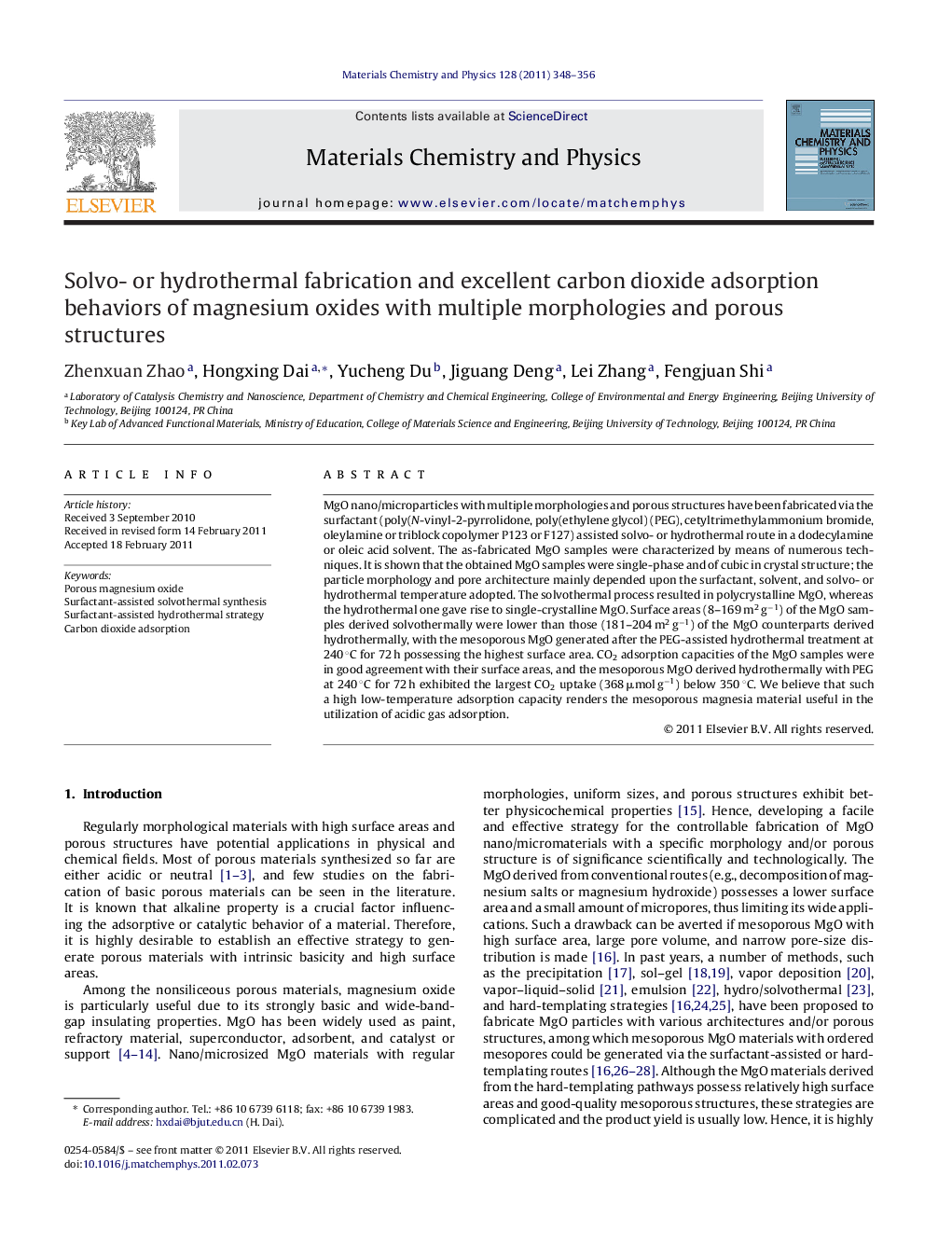| Article ID | Journal | Published Year | Pages | File Type |
|---|---|---|---|---|
| 1524878 | Materials Chemistry and Physics | 2011 | 9 Pages |
MgO nano/microparticles with multiple morphologies and porous structures have been fabricated via the surfactant (poly(N-vinyl-2-pyrrolidone, poly(ethylene glycol) (PEG), cetyltrimethylammonium bromide, oleylamine or triblock copolymer P123 or F127) assisted solvo- or hydrothermal route in a dodecylamine or oleic acid solvent. The as-fabricated MgO samples were characterized by means of numerous techniques. It is shown that the obtained MgO samples were single-phase and of cubic in crystal structure; the particle morphology and pore architecture mainly depended upon the surfactant, solvent, and solvo- or hydrothermal temperature adopted. The solvothermal process resulted in polycrystalline MgO, whereas the hydrothermal one gave rise to single-crystalline MgO. Surface areas (8–169 m2 g−1) of the MgO samples derived solvothermally were lower than those (181–204 m2 g−1) of the MgO counterparts derived hydrothermally, with the mesoporous MgO generated after the PEG-assisted hydrothermal treatment at 240 °C for 72 h possessing the highest surface area. CO2 adsorption capacities of the MgO samples were in good agreement with their surface areas, and the mesoporous MgO derived hydrothermally with PEG at 240 °C for 72 h exhibited the largest CO2 uptake (368 μmol g−1) below 350 °C. We believe that such a high low-temperature adsorption capacity renders the mesoporous magnesia material useful in the utilization of acidic gas adsorption.
Graphical abstractCubic-crystallized MgO with multiple morphologies and porous structures are selectively fabricated using the surfactant-mediated solvo- or hydrothermal methods with MgO as Mg source in an organic (OA or DA) or aqueous medium. The high-surface-area (204 m2 g−1) MgO derived hydrothermally with PEG at 240 °C for 72 h exhibits the largest CO2 uptake (368 μmol g−1) below 350 °C.Figure optionsDownload full-size imageDownload as PowerPoint slideHighlights► Surfactant-assisted solvo- or hydrothermal strategy favors the generation of porous MgO. ► Surfactant, solvent and solvo/hydrothermal temperature govern MgO shape and pore structure. ► MgO obtained hydrothermally with PEG at 240 °C possesses a high surface area of 204 m2 g−1. ► The MgO (surface area, 204 m2 g−1) exhibits the largest CO2 uptake (368 μmol g−1) below 350 °C.
